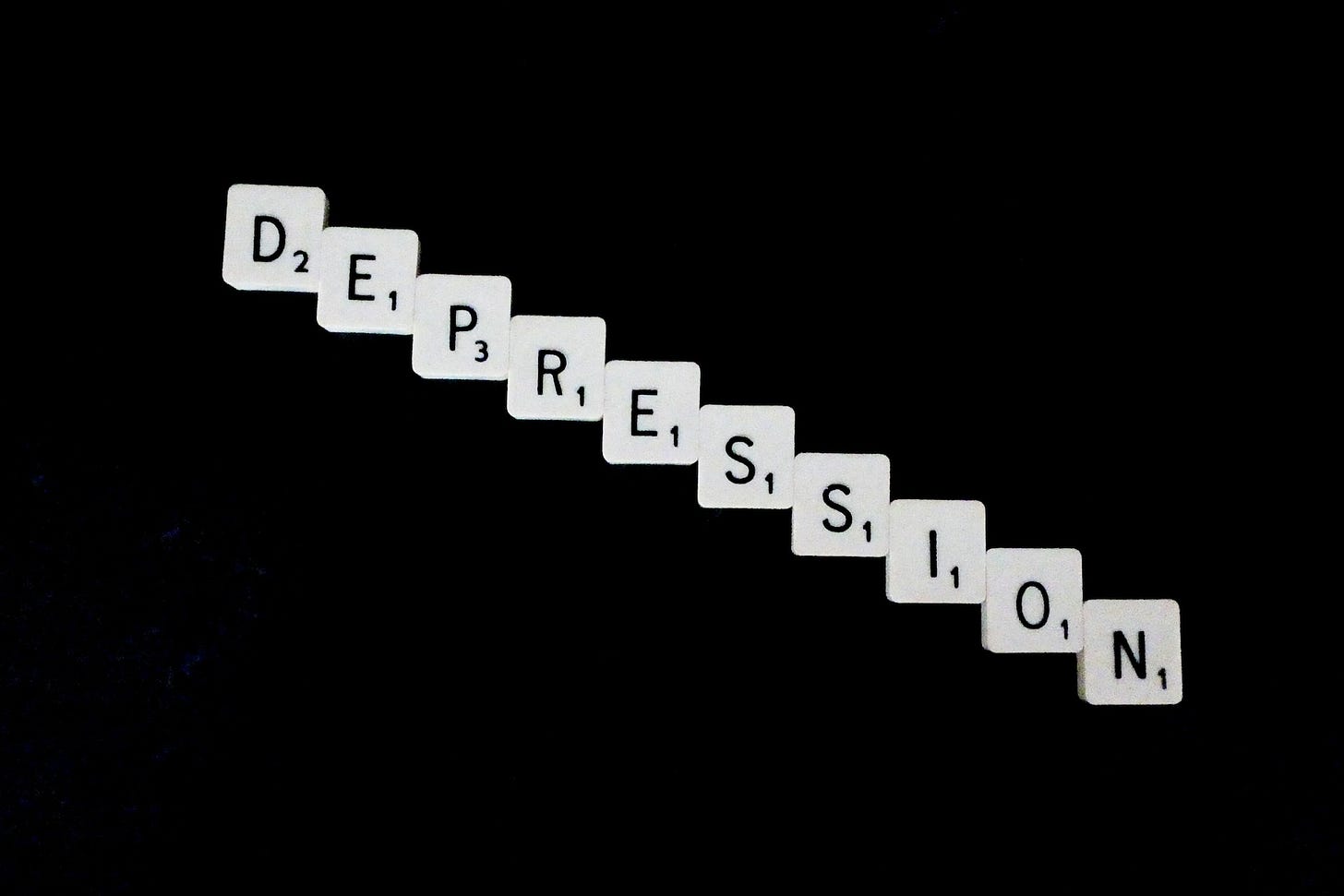Is It Sadness or Depression? The Key Differences Explained.
This article explores the difference between sadness and depression, providing readers with a comprehensive guide to understanding these complex emotional states.
DISCLAIMER
The information provided in this article is for educational and informational purposes only. It is not intended as medical or professional advice and should not be relied upon as a substitute for consultations with qualified health professionals or mental health professionals. The author and publisher do not accept any liability or responsibility for any loss or damage that may arise from reliance on information contained in this article. Readers should always seek the advice of a qualified healthcare provider with any questions or concerns about their mental health or well-being.

As humans, we experience a range of emotions that shape our thoughts, behaviors, and overall outlook on life. Sometimes we feel happy and content, while other times we feel sad and blue. And then there are times when we feel downright depressed as if the whole world has lost its color and meaning.
There are those times when nothing about our existence makes sense and there’s this internal struggle to make sense of everything we are going through, we’ve all been there and it isn’t something we feel proud to talk about and sometimes we just cover it up with a fake smile and try to blend into the usual activities with friends and family so we don’t get them worried or receive judgment from them or to avoid things like ;
“It’s nothing to be worried about”
“come on just cheer up already”
Sadness and depression are two words that are often used interchangeably. However, they are not the same thing. In fact, they are as different as a rainy day and a hurricane. Sure, both can leave you feeling down, but one is a passing storm while the other can be a catastrophic event. So, let's dive into the differences between sadness and depression.
SADNESS
Sadness is a temporary emotion that is usually triggered by a specific event, such as a breakup, a bad day at work, or a loss of a loved one. It can be characterized by feelings of low mood, tearfulness, and lethargy. However, sadness is a normal and healthy emotion that can help us process difficult situations and move on with our lives.
Sadness and depression are two emotions that are often confused with each other. While sadness is a natural response to certain life events, depression is a serious mental health condition that requires professional treatment. Understanding the key differences between sadness and depression is crucial for identifying when to seek help.
Sadness is a natural emotion that we all experience. It's a feeling of unhappiness that can be triggered by any number of things, such as a breakup, the loss of a loved one, or even a bad day at work. Sadness is a temporary state of being that usually goes away on its own or with the help of a little self-care. It's like a gray cloud that passes overhead, but eventually moves on to reveal the sunshine once again.
DEPRESSION

Depression, on the other hand, is a more persistent and severe emotional state that affects a person's mood, thoughts, and behavior. It is a mental health disorder that can be caused by a combination of genetic, biological, environmental, and psychological factors. Depression can cause a person to feel sad, hopeless, and disconnected from the world around them. It can also affect their sleep patterns, appetite, energy levels, and ability to concentrate.
Depression is a mental illness that affects millions of people around the world. It's not just a feeling of sadness, but a persistent and overwhelming sense of hopelessness, worthlessness, and despair. Depression can be caused by a variety of factors, including genetics, life events, and chemical imbalances in the brain. Unlike sadness, depression doesn't just go away on its own. It requires treatment and support from mental health professionals.
Now, you might be thinking, "Wow, this is getting heavy. Where's the humor in all of this?" Well, the truth is that there's not much to laugh about when it comes to depression. But we can find some comic relief in the fact that many people mistake sadness for depression (and vice versa).
Think about it: how many times have you heard someone say, "I'm so depressed" when they're actually just feeling a little down? Or how about when someone says, "Cheer up, it's not that bad" to someone who is struggling with a serious case of depression? We've all been guilty of these misunderstandings at some point or another.

Key Differences Between Sadness And Depression :
Sadness:
A natural human emotion
Usually temporary
Can be caused by a specific event or situation
May be accompanied by feelings of disappointment, grief, or longing
Can be managed through self-care strategies
Depression:
A mental health disorder
Lasts for longer periods of time
Can occur without any apparent cause
Characterized by a persistent low mood
Loss of interest in activities that were once enjoyable
Feelings of worthlessness
Changes in appetite and sleep patterns
Often requires professional treatment.
Another key difference between sadness and depression is the severity and persistence of the symptoms. While sadness is a normal human emotion that can be managed with self-care and support from others, depression is a serious condition that requires professional help. Depression can significantly impact a person's quality of life, leading to problems with work, relationships, and physical health.
Sadness is like a thunderstorm. It comes and goes, and while it may be intense, it eventually passes. You might feel sad after a breakup or the loss of a loved one, but over time, you start to feel better. It's a natural part of the human experience.
Depression, on the other hand, is like a never-ending winter. It's not just feeling sad for a few days, it's a persistent feeling of hopelessness, worthlessness, and emptiness. Depression can make it hard to function in everyday life and can even lead to physical symptoms like fatigue and changes in appetite.
What Does The Bible Teach About Sadness And Depression
Psalm 42:5 - "Why are you downcast, O my soul? Why so disturbed within me? Put your hope in God, for I will yet praise him, my Savior and my God." This verse acknowledges the reality of feeling downcast or disturbed, but it also encourages the reader to turn to God for hope and comfort.
2 Corinthians 1:3-4 - "Praise be to the God and Father of our Lord Jesus Christ, the Father of compassion and the God of all comfort, who comforts us in all our troubles so that we can comfort those in any trouble with the comfort we ourselves receive from God." This passage reminds us that God is a source of comfort and that we can use our own experiences of struggle to help others who are going through similar challenges
If this has helpful leaving a donation will encourage us to keep sending this like this out for free and please support us by liking sharing and subscribing






